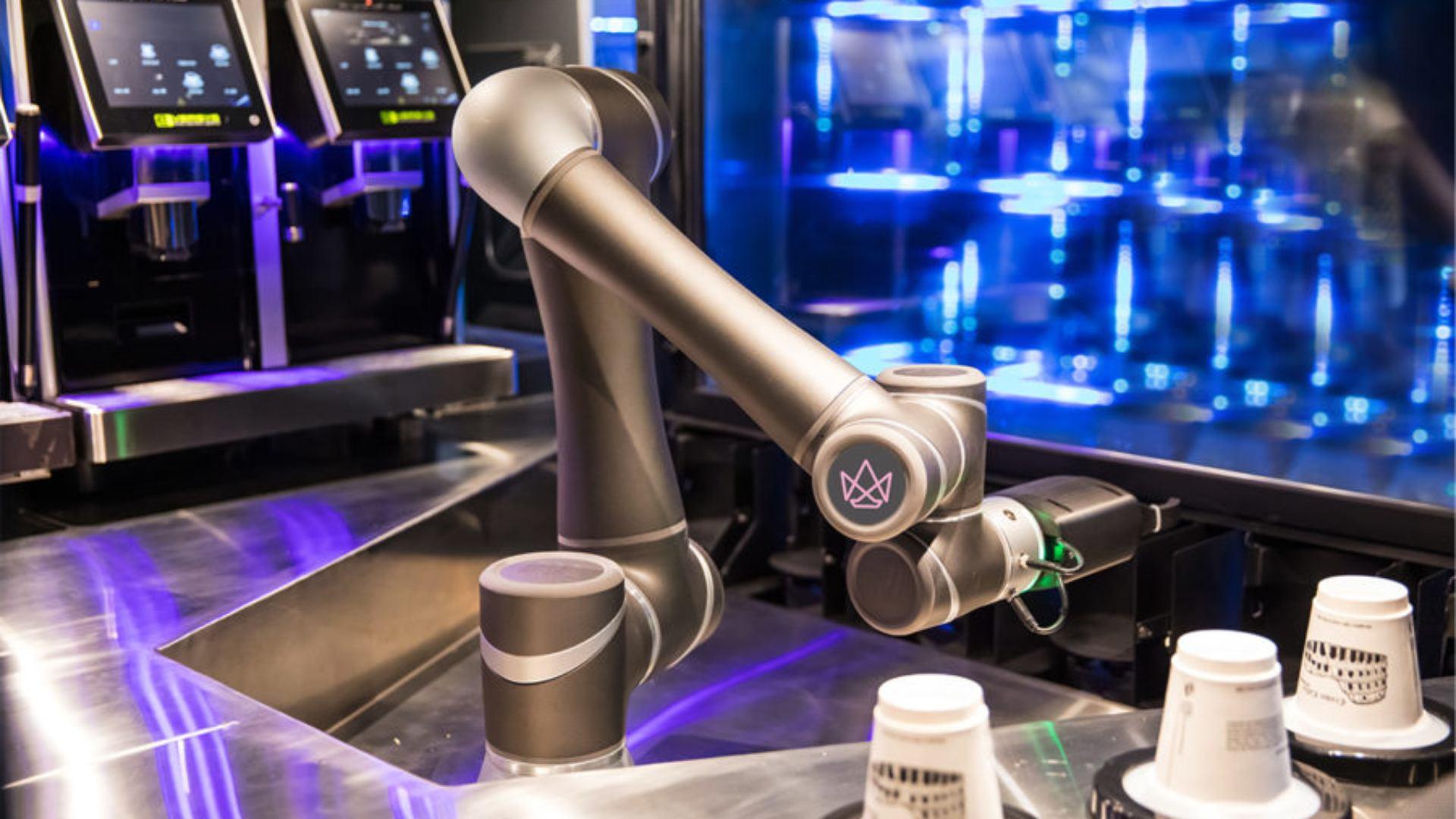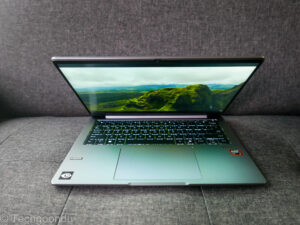
At the Plaza Singapura mall in Singapore, shoppers have been treated to cups of espresso since September 2021, when a robot barista cutely named Ella first started brewing coffee to curious and surprised glances.
Enclosed in a kiosk, the robot has been busy preparing up to 200 cuppas an hour and in 2022 alone, it served up 100,000 beverages, according to Crown Digital, the Singapore startup behind the machine.
Since its introduction in 2020, various version of the Ella robot has been brewing coffee at events. In 2021, it started operating in Tokyo and Yokohama stations in Japan, as part of a test.
Sylvain Barraud, the company’s head of technology and engineering who oversees Ella’s development, tells Techgoondu that a consumer-facing robot requires a lot more thought than one that’s in a factory, say, making cars.
Other than refining the coffee making processing, such as how coffee beans are ground, the robot has to move in a pleasing, graceful manner so it does not alarm customers, he adds.
“We want the Ella experience to be enjoyable, so it’s important that Ella is pleasing to watch,” he says, in this month’s Q&A.
NOTE: Responses have been edited for style and clarity.

Q: How many cups of coffee has Ella served up so far and how does the coffee compare with ones made by human baristas?
A: In 2022 alone, Ella had served more than 100,000 cups of coffee to consumers across Singapore. Each hour, Ella can brew up to 200 cups. This is the main difference between Ella and a human barista.
There’s no doubt that a skilled barista can brew an exceptional cup of coffee, but it’s unlikely that they would be able to brew 200 in an hour, and ones that are consistently delicious.
Q: What are the lessons that can be learnt from the rollout in Singapore?
A: Ella is a consumer-facing robot, and with humans, we should always expect the unexpected, as they will always throw curveballs!
The main things we have learnt have been in relation to unexpected behaviour, and our response to the operational data is to automate as much of the Ella process as possible.
For example, we are developing a sensor so if a customer spills their coffee in one of the collection pigeonholes, the usage of said pigeonhole will be stopped until clean-up has taken place. When consumers are rushing to grab their coffees on the way into work, they can sometimes spill their drinks.
On the software side of things, we’ve refined the checkout process to be as smooth as possible, drawing inspiration from best-in-class apps.
By simplifying the design, we’ve made it more straightforward to use the e-wallet and subscription options when paying. This has helped to reduce the checkout time by 50 per cent and contributed to an increase in customer loyalty.
Additionally, we’ve added a gamified element whereby consumers can better see where they are in the queue and how it’s progressing on the robotic coffee making journey.
Q: What is the biggest challenge in designing a robot that has to interact with humans?
A: Ella needs to be fast and efficient. However, as a consumer-facing robot, it’s also important that she is not scary or dangerous. We want people to enjoy the Ella process!
With this in mind, we have a lot of additional considerations compared to if we were designing an industrial robot. A lot of work goes into finetuning the movements of Ella. For example, they need to be slow enough that they do not cause alarm, as well as being as smooth as possible.
There’s also an aesthetic element – again, we want the Ella experience to be enjoyable, so it’s important that Ella is pleasing to watch. As I mentioned, these considerations are unique to consumer-facing robots.
Q: Robotics proponents say humans can pivot to new jobs, much like carriage drivers in the 19th century became car drivers. Is that the right analogy today, and are people right to worry that robots will take away jobs?
A: This taps back into my earlier point about Ella’s speed and consistency when it comes to brewing up to 200 cups of coffee each day.
Good coffee is very much down to personal taste. Some prefer theirs milkier, sweeter, perhaps with syrup.
While a human barista may become overwhelmed with constant requests, Ella is able to meet these demands, and offers affordable, convenient, quality coffee.
An in-house barista, who develops and tests each and every recipe, is instrumental in this process. Additionally, the tech team works behind the scenes to make the necessary updates and developments to ensure that Ella is consistently delivering barista-level coffee to every customer.
In short, I don’t think robots will ever take away jobs. Rather, people will move into new roles, with robots supporting us on things that are humanly difficult or even impossible.






